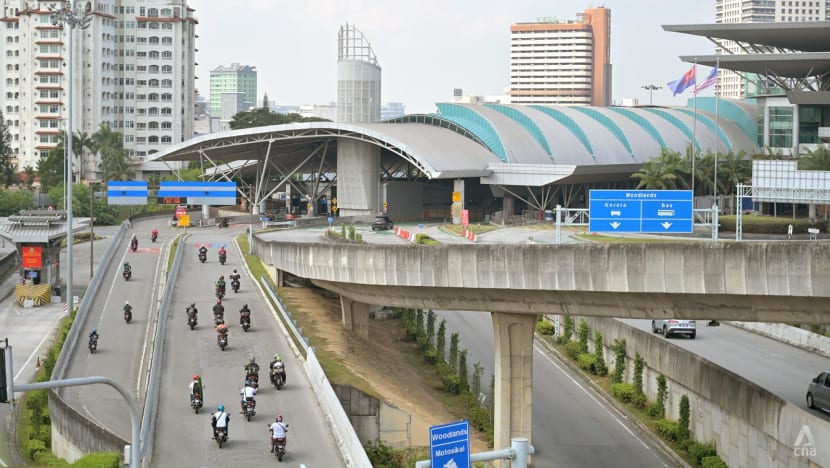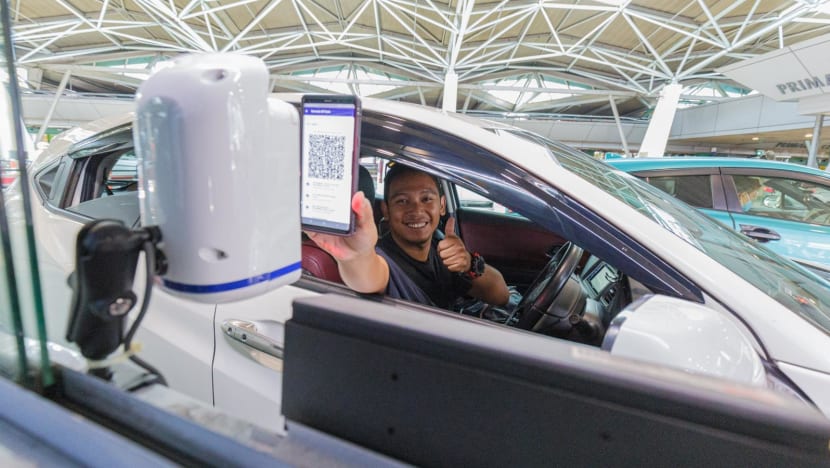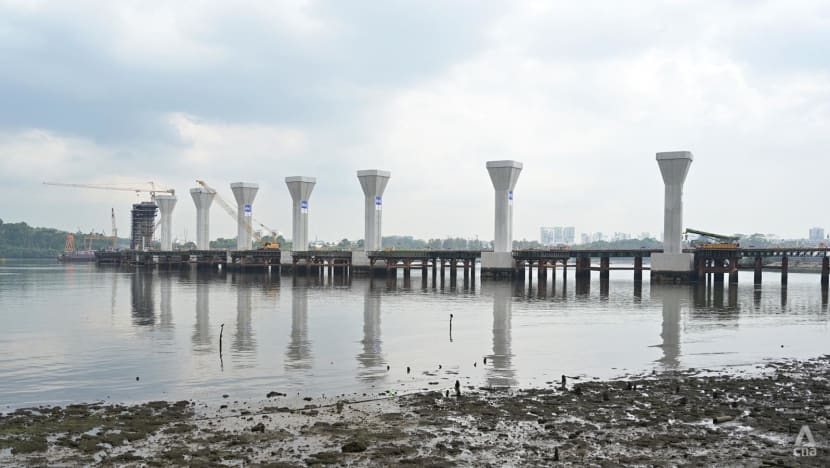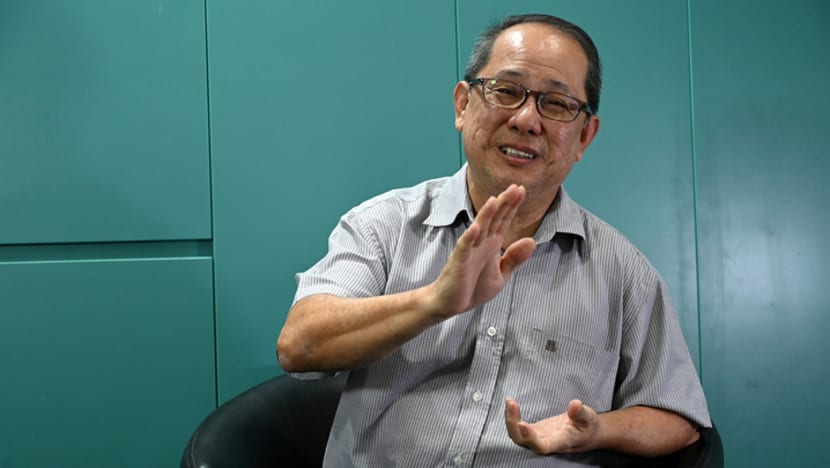Calls grow in Malaysia for QR code clearance at Johor land checkpoints, paving way for passport-free travel
Singapore’s QR code rollout has cut travel time for commuters, who want Malaysia to do the same ahead of the completion of the Rapid Transit System Link and planned Johor-Singapore Special Economic Zone.

File photo of the Bangunan Sultan Iskandar Customs, Immigration, and Quarantine Complex (BSI CIQ) in Johor Bahru. (Photo: CNA/Zamzahuri Abas)

This audio is generated by an AI tool.
JOHOR BAHRU: Malaysian IT analyst Sarguneshwara Subramaniam, who commutes between Johor Bahru and Singapore thrice a week, has endured congestion at the land checkpoints for more than a decade.
Traffic at the Woodlands Causeway and Tuas Second Link is particularly heavy at this time of the year, as people mark the Qing Ming festival by visiting their ancestors’ graves as well as celebrate Hari Raya Puasa, he said.
In recent weeks, however, the 44-year-old has been pleasantly surprised.
“With the QR code now (implemented) on the Singapore side, travelling has been way smoother than I expected,” said Mr Subramaniam, who works in Singapore and heads north thrice a week to visit his family.
“There’s no handing over (of) any passports – just scan the QR code and wait for the officers to verify your name and identity."

Since Singapore’s Immigration and Checkpoints Authority (ICA) rolled out its QR code initiative on Mar 19 for drivers on its side of the land border, Mr Subramaniam’s average travel time for a one-way trip has shortened to 90 minutes, from around two hours.
It now takes him and his wife less than 40 seconds to drive through Woodlands Checkpoint, instead of around 90 seconds previously.
“We actually monitored the time taken and were quite pleased,” he said.
Another frequent commuter, Singaporean Murphy Lip, has seen his journey times cut from 90 minutes to just an hour these days.
“I notice that it’s particularly good for big groups of people travelling in large cars. With the QR code scanners, it takes between 45 and 50 seconds to clear these groups as the officer does not need to flip through the pages of each passport to verify identity,” added the 41-year-old senior cloud engineer, who lives in Malaysia and travels to Singapore for work every alternate day.
Calls for Malaysia to also implement QR code clearance at its land checkpoints with Singapore have grown louder in the wake of positive user feedback to Singapore’s rollout.
Both countries signed a memorandum of understanding (MOU) on Jan 11 to develop a framework for a legally binding agreement on the Johor-Singapore Special Economic Zone (SEZ). A key part of the MOU was exploring passport-free clearance on both sides of the border, and Singapore unilaterally introduced its system last month.
Malaysia’s federal government has not made any announcement on passport-free clearance at land checkpoints since, but Johor’s state government and businesses are keen to move things forward.
Johor works, transport, infrastructure and communication committee chairman Mohamad Fazli said that he would be meeting the relevant agencies in Singapore after Hari Raya to look at the QR code initiative, news outlet The Star reported on Tuesday (Apr 9).
“We want to see whether the implementation has been successful or not,” Mr Fazli reportedly said.
“I will compile all the related information and have a discussion with our Immigration director-general after that,” he added.
CNA has asked the Johor immigration department if there are plans to develop passport-free immigration clearance in the short term, ahead of further discussions for the planned SEZ.
“IT MUST BE DONE NOW”
Mr Andrew Chen, Johor state assemblyman for the Stulang constituency – an area adjacent to the Johor Bahru immigration complex – told CNA it is imperative that Malaysia begins to implement a passport-free clearance system as soon as possible. This would signal the Malaysian government's commitment to the terms of the SEZ, he said.
The Democratic Action Party (DAP) politician explained that Malaysia may not necessarily implement a QR code system like Singapore's, but should consider options such as facial recognition biometric clearance or other methods that would allow passport-free travel when the SEZ comes to fruition.
DAP is part of the Pakatan Harapan coalition and unity government led by Prime Minister Anwar Ibrahim.
“It is very important that these systems are put in place soon. The agreement to one day implement passport-free travel is there, and Malaysia will honour it,” said Mr Chen, who led a state task force between 2018 and 2020 to ease congestion at the Causeway.
“Smooth traffic flow of people is especially important for the SEZ to be fruitful and for the Malaysian economy to benefit from this bilateral initiative. But it must be done now, ahead of further discussions in regards to the SEZ,” he added.
The authorities should also look at a system – similar to the one to be implemented for the Johor Bahru-Singapore Rapid Transit System (RTS) Link – where travellers only need to clear immigration once, suggested Mr Chen.

The RTS Link is slated to be completed by end-2026. And while no date has been set for the SEZ, Mr Samuel Tan, executive director of KGV International Property Consultants in Johor, expects the project to boost the number of travellers passing through the land checkpoints to more than half a million a day, up from over 400,000 currently.
The Malaysian government should make QR code clearance a “top priority” to avoid a “bottleneck for commuters”, said Mr Tan.
IS MALAYSIA READY?
But Ms Christina Karl, global immigration leader at Deloitte, noted that Malaysia may be at a different stage from Singapore in the process.
“When considering the implementation of initiatives such as QR code clearance at land and/or air checkpoints, it is crucial to acknowledge and respect the sovereignty of each nation and understand that they may have different priorities, resources and levels of technological readiness,” she said.
“Adopting new technologies can vary significantly based on infrastructure, investment priorities, regulatory frameworks and political considerations, and the number of neighbouring countries which these changes may impact,” said Ms Karl.
That said, she agreed QR code clearance has increased convenience for travellers at Singapore’s land checkpoints. “Removing the human element from the process also allows for increased accuracy and an additional security layer which comes hand in hand with this technology,” she said.
Globally, border control is becoming more seamless, Ms Karl noted.
Travellers have been free to move between 26 countries in the Schengen area in Europe without the need for passport checks at the borders since 1995. This includes nations like Germany, Belgium, France, as well as non-European Union countries Iceland, Norway, Switzerland and Liechtenstein.
The United Arab Emirates is also set to implement facial recognition at its borders and remove the need to produce a passport at the port of entry.
“The global landscape is evolving rapidly and advancements in technology and societies’ expectations are driving transformations in border control,” said Ms Karl.
Mr Teh Kee Sin, advisor to the South Johor Small and Medium-sized Enterprises (SME) Association, acknowledged the Malaysian government will have to put in place infrastructure such as QR code scanners and a centralised app, as well as train immigration officers.
This would take time, he said, but would pay off in reducing congestion and commute times.

“Imagine a time in the near future where we do not need to carry our passports in hand to cross the border into Singapore,” said Mr Teh.
For Mr Subramaniam, precious minutes shaved off per trip add up to countless hours saved by users of the Causeway and Second Link each day.
“When you multiply this by hundreds of thousands a day, it makes a difference,” he said.



















